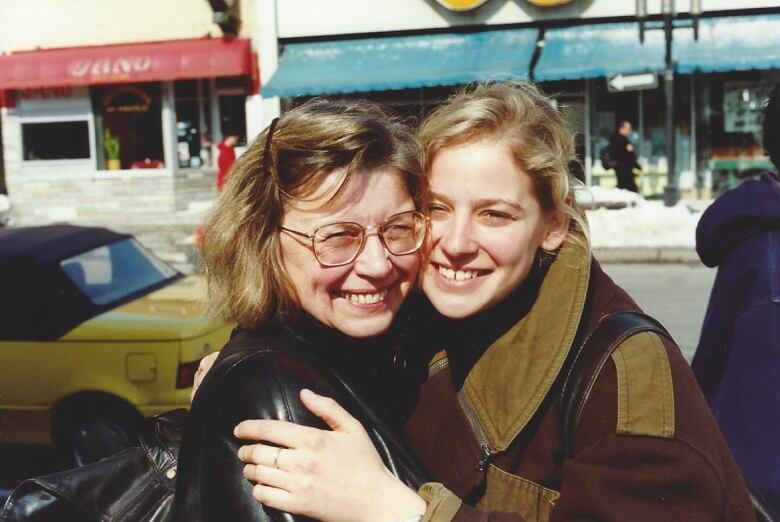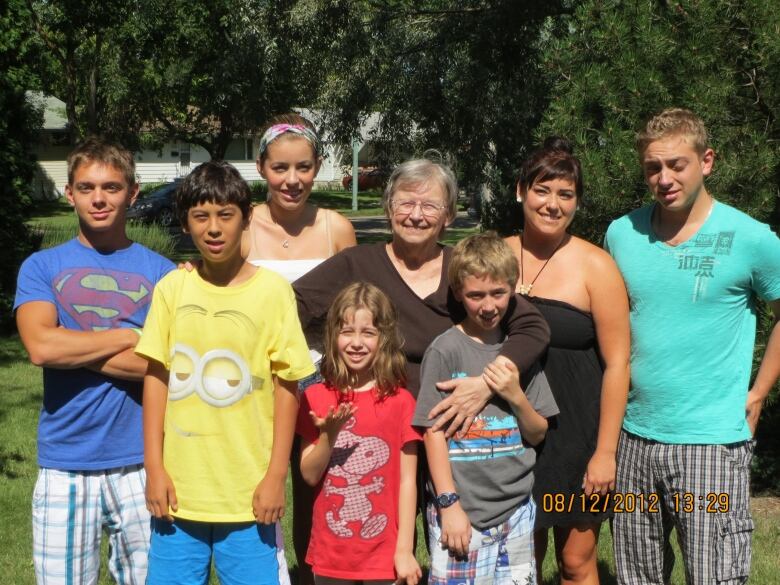Regina author's posthumous book on early Indigenous life was 30-plus years in the making
Beaver, Bison, Horse hailed as important book about ecology and traditions

A new book that looks at the traditional knowledge of Indigenous people on the prairies is being hailed as an important scholarly work,but it also has a fascinating back story.
Beaver, Bison, Horse: The Traditional Knowledge and Ecology of the Northern Great Plains was written by Grace Morgan.
It was more than three decades in the making. It's author died in 2016, before it was completed.
About the author
Gracewas born Grace Hrytzak in Rosthernand raised in Yellow Creek, Sask.
While studying biology at the University of Saskatchewan, she met Leo Morgan, the man she would eventually marry. Leo was studying law. After he graduatedthey moved to Regina, where they raised four children.
Grace returned to the U of Sin the 1970s to finish a biology degree, but ultimately anthropology became her passion. She finished another BA and then pursued a master's degree in Anthropology at the University of Regina.
In 1991, Grace completed a PhD at the University of Alberta. Her doctoral project looked at the lives of pre-contact Indigenous people on the great plains. It would later become the basis ofBeaver, Bison, Horse.

Grace's son Brian Morgan spoke about her in an interview on CBC Saskatchewan's Afternoon Edition,
"She was keenly interested in environment and ecology studies and she brought these all together to bring a really unique perspective on the ancient history of the Plains Indigenous peoples and their relationship to the land," Brian said
He said his mother was fascinated with the work of Marvin Harris, an anthropologist who developed the research termcultural materialism. Harris' work made Morgan question why, for thousands of years, Indigenous people wouldn't hunt the beaver.
Scholarly work becomes a book
James Daschuk is an associate professor at the U of R and the author of Clearing the Plains,a book about the loss of Indigenous life. He considered Gracea friend and a teacher.
Daschuk wrote the foreward for Beaver, Bison, Horse. He said it is an important work, even 30 years after it was defended as a PhD thesis, for a number of reasons.
"The first is that Grace managed to crack the code on an ecosystem and way of life that no longer exists,"Daschuksaid. "Many of us have a romanticized view of Indigenous people in the time before Europeans showed up, that they 'walked softly on the earth.'
"What Grace showed was that the Indigenous landscape of the prairies was one that was managed, providing the resources for communities of 1,000 people or more to flourish during a time when we know that the region was much drier than it is today."
Brian Morgan describes his mother as a meticulous researcherwho went to great lengths to create an understanding of life in those early days.
"She worked to reconstruct what life was like on the Prairies several hundred years ago," says Brian.
Brian saidhis mother studied soil samples for nitrogen content to better understandtraditional burning practices.
"She also studied hydrology charts and climatology records to help get a picture of animal migrations, as well as life in summer and winter camps for Indigenous people," he said.
Grace even read the journals of early fur traders and Hudson's Bay Company people who came west, looking at their accounts of the life and wildlife of the area.
Her extensive research led to an understanding that the early Indigenous people valued the beaver for its ability to find water, even when it was scarce. The bison represented subsistence for the early Plains occupants. Later the horse forever changed their lives, not necessarily for the better.
Finishing the book
Brian said that his mother was working on the book right up until her death,between doctor visits and chemo treatments for ovarian cancer.
When she died in 2016, at the age of 82, the book wasn't complete. Brian saidit was partly due to his mother being a perfectionist, who was researching new information until her final days.

After Grace's death, Brian,his sisterKim and her partner began going through his mother's notes, hardcopies and digital files.
He credits James Daschuk, along withKaren Clark and Dallas Harrison of the U of R Press, with ensuring the book became a reality.
Brian added thateven though his motherGrace was studying an ancient way of life, she really saw the work as speaking to contemporary times,and contemporary problems around climate change and environmental mismanagement.
"She always had this sense that the work speaks to some of the ecology and environmental problems we have now and that there's Indigenous wisdom we can draw from."












_(720p).jpg)


 OFFICIAL HD MUSIC VIDEO.jpg)
.jpg)



























































































